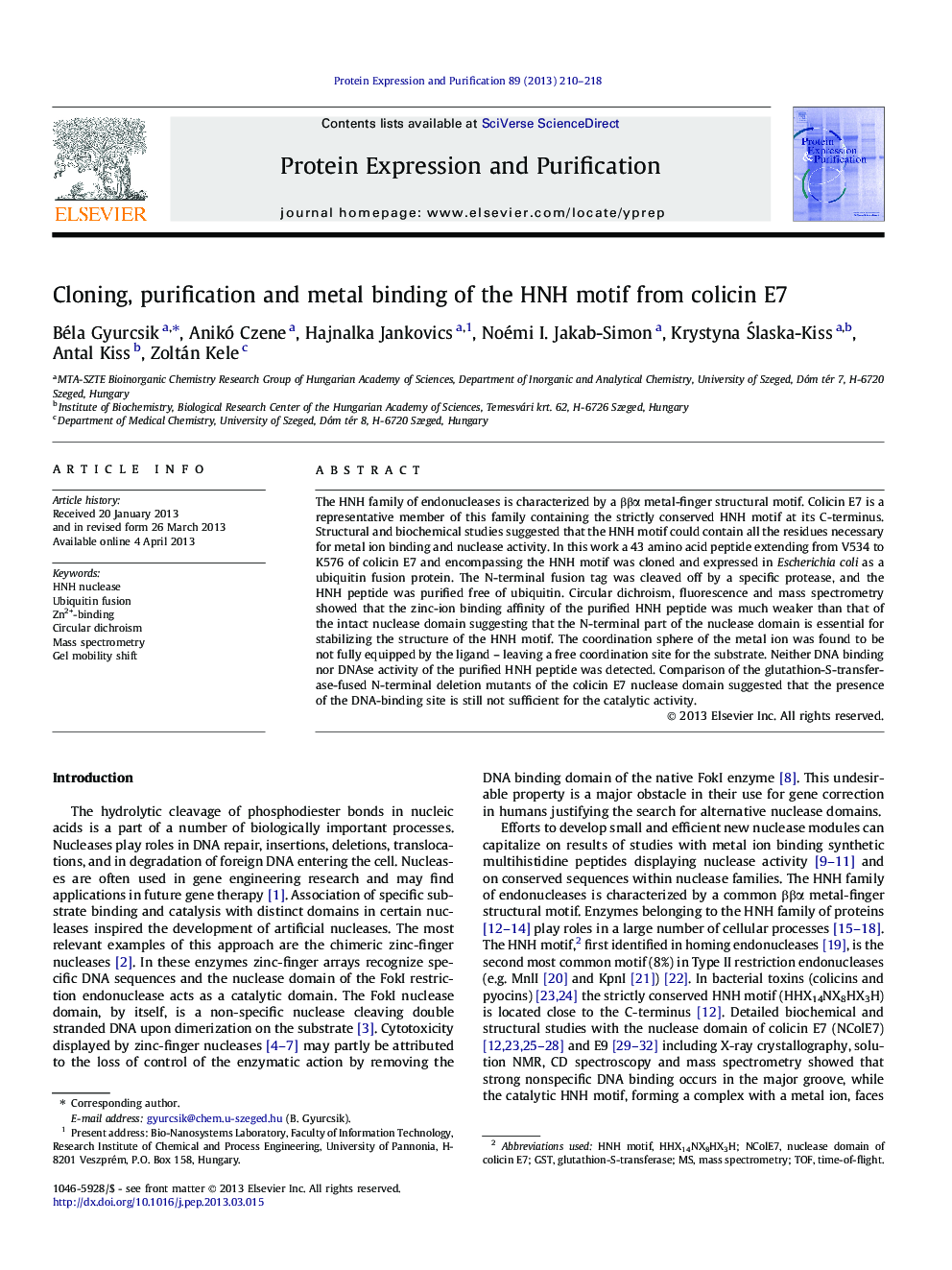| Article ID | Journal | Published Year | Pages | File Type |
|---|---|---|---|---|
| 2020620 | Protein Expression and Purification | 2013 | 9 Pages |
•We cloned and purified the HNH peptide from colicin E7 as a ubiquitin fusion protein.•The HNH peptide could be recovered by protease digestion of the fusion protein.•The HNH peptide did not show nuclease activity and DNA binding.•The HNH peptide had impaired zinc(II) binding affinity.•Upon zinc(II)-binding the ββα metal-finger structure is partly formed.
The HNH family of endonucleases is characterized by a ββα metal-finger structural motif. Colicin E7 is a representative member of this family containing the strictly conserved HNH motif at its C-terminus. Structural and biochemical studies suggested that the HNH motif could contain all the residues necessary for metal ion binding and nuclease activity. In this work a 43 amino acid peptide extending from V534 to K576 of colicin E7 and encompassing the HNH motif was cloned and expressed in Escherichia coli as a ubiquitin fusion protein. The N-terminal fusion tag was cleaved off by a specific protease, and the HNH peptide was purified free of ubiquitin. Circular dichroism, fluorescence and mass spectrometry showed that the zinc-ion binding affinity of the purified HNH peptide was much weaker than that of the intact nuclease domain suggesting that the N-terminal part of the nuclease domain is essential for stabilizing the structure of the HNH motif. The coordination sphere of the metal ion was found to be not fully equipped by the ligand – leaving a free coordination site for the substrate. Neither DNA binding nor DNAse activity of the purified HNH peptide was detected. Comparison of the glutathion-S-transferase-fused N-terminal deletion mutants of the colicin E7 nuclease domain suggested that the presence of the DNA-binding site is still not sufficient for the catalytic activity.
